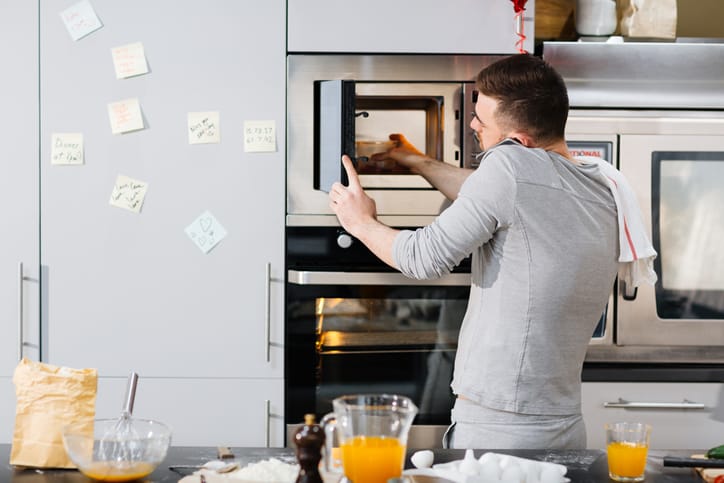
Why make your home more energy efficient?
It costs less to power a home that has been converted to be more energy-efficient. It increases the comfort level indoors. Even better, it reduces our impact on climate change. Many scientists now believe that excessive energy consumption contributes significantly to global warming. It reduces pollution, as conventional power production introduces pollutants that find their way into the air, soil, and water supplies.
Here are a few areas that you can improve on to make your home energy efficient:
Find better ways to heat and cool your house
As much as half of the energy used in homes goes toward heating and cooling.
Install a ceiling fan. Ceiling fans can be used in place of air conditioners, which require a large amount of energy.
Periodically replace air filters in air conditioners and heaters.
Set thermostats to an appropriate temperature. Specifically, they should be turned down at night and when no one is home. In most homes, about 2% of the heating bill will be saved for each degree that the thermostat is lowered for at least eight hours each day. Turning down the thermostat from 75° F to 70° F, for example, saves about 10% on heating costs.
Install a programmable thermostat. A programmable thermostat saves money by allowing heating and cooling appliances to be automatically turned down during times that no one is home and at night. Programmable thermostats contain no mercury and, in some climate zones, can save up to $150 per year in energy costs.
Install a tankless water heater. Demand-type water heaters (tankless or instantaneous) provide hot water only as it is needed. They don’t produce the standby energy losses associated with traditional storage water heaters, which will save on energy costs. Tankless water heaters heat water directly without the use of a storage tank. When a hot water tap is turned on, cold water travels through a pipe into the unit. A gas burner or an electric element heats the water. As a result, demand water heaters deliver a constant supply of hot water. You don’t need to wait for a storage tank to fill up with enough hot water.
Replace incandescent lights
The average household dedicates 11% of its energy budget to lighting. Traditional incandescent lights convert approximately only 10% of the energy they consume into light, while the rest becomes heat. The use of new lighting technologies, such as light-emitting diodes (LEDs) and compact fluorescent lamps (CFLs), can reduce the energy use required by lighting by 50% to 75%. Advances in lighting controls offer further energy savings by reducing the amount of time that lights are on but not being used. CFLs use 75% less energy and last about 10 times longer than traditional incandescent bulbs. LEDs last even longer than CFLs and consume less energy.
Seal and insulate your home
Sealing and insulating your home is one of the most cost-effective ways to make a home more comfortable and energy-efficient, and you can do it yourself. A tightly sealed home can improve comfort and indoor air quality while reducing utility bills.
The following are some common places where leakage may occur: electrical receptacles/outlets; mail slots; around pipes and wires; wall- or window-mounted air conditioners; attic hatches; fireplace dampers; inadequate weatherstripping around doors; baseboards; window frames; and switch plates.
Install efficient shower heads and toilets
Low-flow shower heads are available in different flow rates, and some have a pause button which shuts off the water while the bather lathers up.
Low-flow toilets consume 30% to 40% of the total water used in homes, making them the biggest water users. Replacing an older 3.5-gallon toilet with a modern, low-flow 1.6-gallon toilet can reduce usage an average of 2 gallons-per-flush (GPF), saving 12,000 gallons of water per year. Low-flow toilets usually have “1.6 GPF” marked on the bowl behind the seat or inside the tank. Vacuum-assist toilets have a vacuum chamber that uses a siphon action to suck air from the trap beneath the bowl, allowing it to quickly fill with water to clear waste. Dual-flush toilets have been used in Europe and Australia for years and are now gaining in popularity in the U.S. Dual-flush toilets let you choose between a 1-gallon (or less) flush for liquid waste, and a 1.6-gallon flush for solid waste. Dual-flush 1.6-GPF toilets reduce water consumption by an additional 30%.
Use appliances and electronics responsibly
Appliances and electronics account for about 20% of household energy bills in a typical U.S. home. The following are tips that will reduce the required energy of electronics and appliances:
Refrigerators and freezers should not be located near the stove, dishwasher or heat vents, or exposed to direct sunlight. Exposure to warm areas will force them to use more energy to remain cool.
Computers should be shut off when not in use. If unattended computers must be left on, their monitors should be shut off. According to some studies, computers account for approximately 3% of all energy consumption in the United States.
Use efficient ENERGY STAR-rated appliances and electronics. These devices, approved by the U.S. Department of Energy and the Environmental Protection Agency’s ENERGY STAR Program, include TVs, home theater systems, DVD players, CD players, receivers, speakers, and more. According to the EPA, if just 10% of homes used energy-efficient appliances, it would reduce carbon emissions by the equivalent of 1.7 million acres of trees.
Chargers, such as those used for laptops and cell phones, consume energy when they are plugged in. When they are not connected to electronics, chargers should be unplugged.
Laptop computers consume considerably less electricity than desktop computers.
Cook smart
An enormous amount of energy is wasted while cooking. Try some of the following ways to cook smarter.
Convection ovens are more efficient than conventional ovens. They use fans to force hot air to circulate more evenly, thereby allowing food to be cooked at a lower temperature. Convection ovens use approximately 20% less electricity than conventional ovens. Even better, microwave ovens consume approximately 80% less energy than conventional ovens.
Pans should be placed on the matching size heating element or flame. Using lids on pots and pans will heat food more quickly than cooking in uncovered pots and pans. Pressure cookers reduce cooking time dramatically, saving energy. One last tip: when using conventional ovens, food should be placed on the top rack. The top rack is hotter and will cook food faster.
Change the way you do laundry
Do not use the medium setting on your washer. Wait until you have a full load of clothes, as the medium setting saves less than half of the water and energy used for a full load.
Avoid using high-temperature settings when clothes are not very soiled. Water that is 140° F uses far more energy than 103° F for the warm-water setting, but 140° F isn’t that much more effective for getting clothes clean.
Clean the lint trap every time before you use the dryer. Not only is excess lint a fire hazard, but it will prolong the amount of time required for your clothes to dry. If possible, air-dry your clothes on lines and racks. Spin-dry or wring clothes out before putting them into a dryer.
Homeowners who take the initiative to make these changes usually discover that the energy savings are more than worth the effort.





